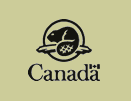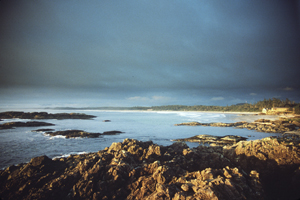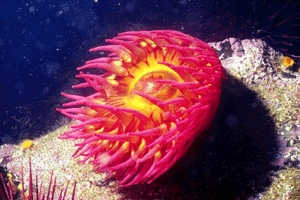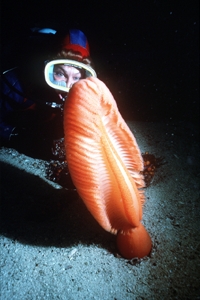|
National Marine Conservation Areas of CanadaIntroduction
Canada is truly a maritime nation with a rich marine heritage. We have the longest coastline in the world -- over 243,000 km along three oceans -- plus another 9500 km along the Great Lakes. We also have responsibility for over 5 million km2 of marine waters - the equivalent of about 60% of the country's land mass! The vast marine ecosystems off these coasts, varied and productive, have played a major role in shaping Canada's history and economy. So it is no wonder that the national marine conservation areas representing this powerful force are an important component of Parks Canada's networks of nationally significant places. Relative newcomers to Parks Canada's networks, national marine conservation areas divide the country's oceans and Great Lakes into 29 marine regions, each one a distinct combination of physical and biological characteristics. Existing national marine conservation areas include submerged lands, the water above them, and any species found there. They can also take in wetlands, estuaries, islands and other coastal lands. Parks Canada is responsible for both protecting these ecosystems and managing them for visitors to understand, appreciate, and enjoy in a sustainable manner. ProtectingMarine ecosystems are fundamentally different from terrestrial environments. And human use in coastal regions, both on land and in the waters, has always been high. This means the effects of human activity -- from degradation of coastal habitats, to land and water pollution, to over-exploitation of resources - can also be high, and often far-reaching.
Because many human uses continue within their boundaries, national marine conservation areas do not try to protect marine ecosystems in a state essentially unaltered by human activity - the primary goal for national parks. National marine conservation areas focus instead on ecologically sustainable use, which means harmonising conservation practices with human activities. This approach involves working closely with others who use the coastal land and the water, and striving to reach common goals - most importantly a healthy, sustainable ecosystem.
Human uses such as fishing and shipping, for example, are allowed in national marine conservation areas. But they would be limited or even eliminated from zones protecting sensitive features such as nesting areas, spawning beds, whale calving areas and cultural sites. And they would be carefully managed to protect the greater ecosystem. Other activities, namely ocean dumping, undersea mining and oil and gas exploration and development, are not permitted in a national marine conservation area. Understanding and appreciating
Each national marine conservation area is a gateway to nature, adventure, learning and discovery, offering visitors the opportunity to connect with a major marine environment, both above and below the surface (or both onshore and offshore), including
Visitors can hike along coastlines shaped over millennia, observe powerful tides and currents, watch sea birds dive and soar over traditional nesting sites, explore the captivating world of a tidal pool, kayak through scenic island archipelagos, dive through waters teeming with unique marine life, discover intriguing underwater archaeological sites, and more. Enhanced by Parks Canada's visitor programs and activities, the opportunities to learn about these unique marine environments, and to develop a deeper understanding for the threats they face and the natural values they support, are many, varied, and unforgettable.
|
||||||||||||||
|
||||||||







